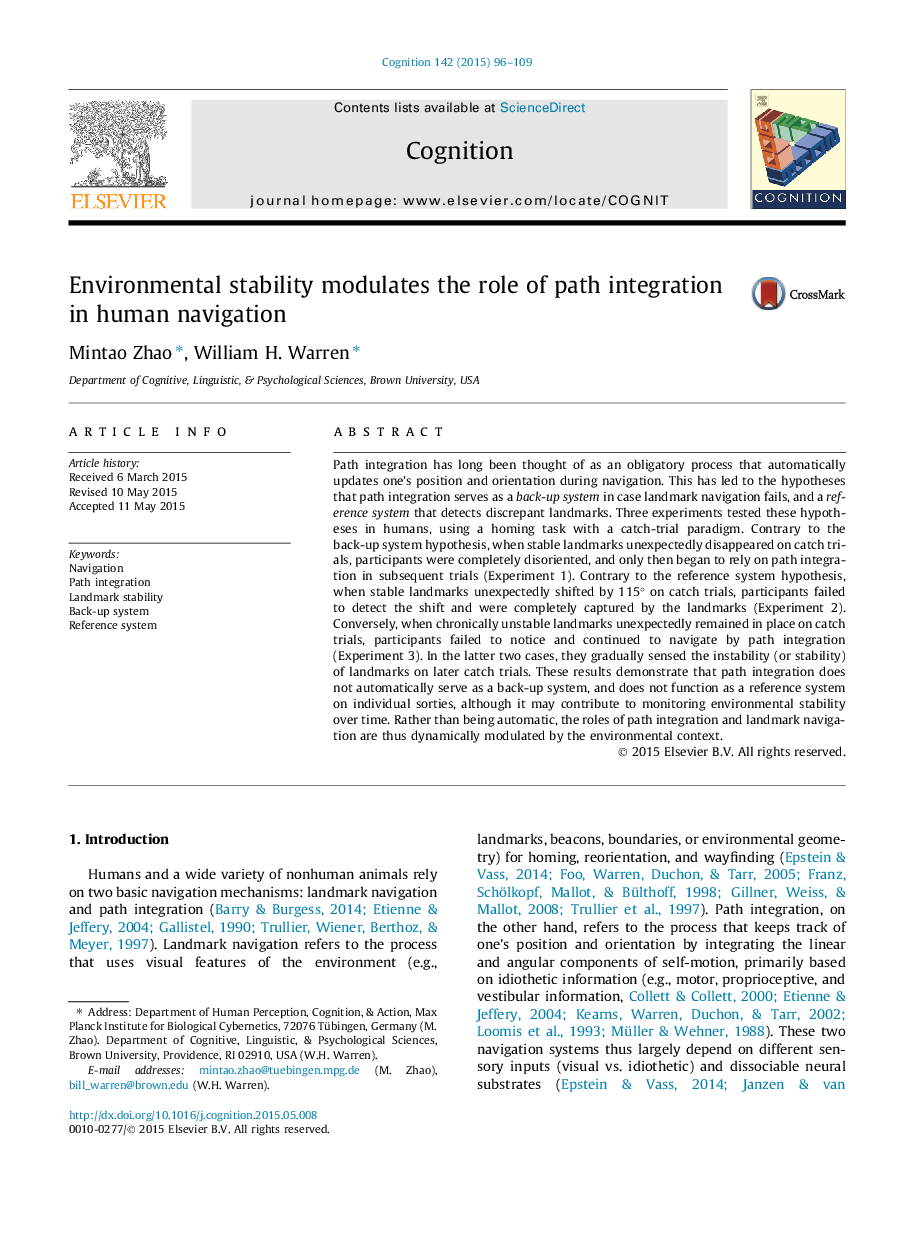| کد مقاله | کد نشریه | سال انتشار | مقاله انگلیسی | نسخه تمام متن |
|---|---|---|---|---|
| 7286797 | 1474125 | 2015 | 14 صفحه PDF | دانلود رایگان |
عنوان انگلیسی مقاله ISI
Environmental stability modulates the role of path integration in human navigation
ترجمه فارسی عنوان
ثبات محیطی، نقش یکپارچگی مسیر در ناوبری انسان را مدون می کند
دانلود مقاله + سفارش ترجمه
دانلود مقاله ISI انگلیسی
رایگان برای ایرانیان
کلمات کلیدی
جهت یابی، یکپارچه سازی مسیر، ثبات برجسته، سیستم پشتیبان، سیستم مرجع،
موضوعات مرتبط
علوم زیستی و بیوفناوری
علم عصب شناسی
علوم اعصاب شناختی
چکیده انگلیسی
Path integration has long been thought of as an obligatory process that automatically updates one's position and orientation during navigation. This has led to the hypotheses that path integration serves as a back-up system in case landmark navigation fails, and a reference system that detects discrepant landmarks. Three experiments tested these hypotheses in humans, using a homing task with a catch-trial paradigm. Contrary to the back-up system hypothesis, when stable landmarks unexpectedly disappeared on catch trials, participants were completely disoriented, and only then began to rely on path integration in subsequent trials (Experiment 1). Contrary to the reference system hypothesis, when stable landmarks unexpectedly shifted by 115° on catch trials, participants failed to detect the shift and were completely captured by the landmarks (Experiment 2). Conversely, when chronically unstable landmarks unexpectedly remained in place on catch trials, participants failed to notice and continued to navigate by path integration (Experiment 3). In the latter two cases, they gradually sensed the instability (or stability) of landmarks on later catch trials. These results demonstrate that path integration does not automatically serve as a back-up system, and does not function as a reference system on individual sorties, although it may contribute to monitoring environmental stability over time. Rather than being automatic, the roles of path integration and landmark navigation are thus dynamically modulated by the environmental context.
ناشر
Database: Elsevier - ScienceDirect (ساینس دایرکت)
Journal: Cognition - Volume 142, September 2015, Pages 96-109
Journal: Cognition - Volume 142, September 2015, Pages 96-109
نویسندگان
Mintao Zhao, William H. Warren,
